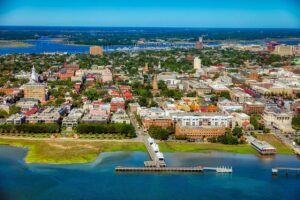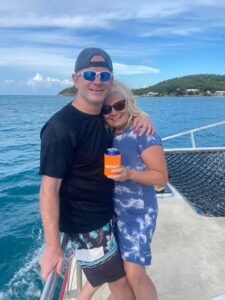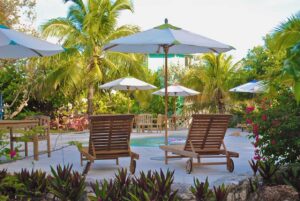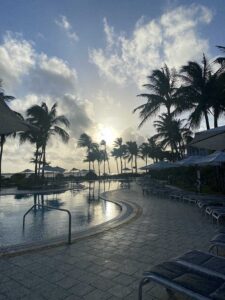SAILING ACROSS AN OCEAN IS OFTEN SEEN AS A MARINER’S BIGGEST ACHIEVEMENT. With 4,000 miles between America and Europe, the distance across the Atlantic means a four-week transit across a temperamental ocean. For this reason, a small collection of mid-Atlantic islands earned the name, “The Blessed Isles.” Officially called Macaronesia, these four island groups — the Azores, Madeira, Canaries and Cape Verde — have played a central role in trans-Atlantic trade since boats first started long-distance voyages.
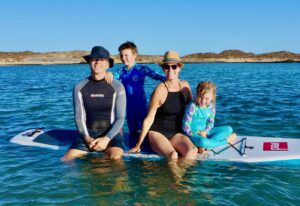
Located west of Portugal, Spain and the north-African coast in the Eastern Atlantic Ocean, they continue to offer a mid-passage respite for modern-day mariners keen for a short break in route between the two continents.
The four island groups are often considered relatively similar. All are volcanic in origin with several of the islands still active (as illustrated by the recent eruption of Cumbre Vieja in Las Palmas, Canaries in September 2021).
Isolation from the mainland allowed species of animal and fauna to flourish, and their exposure to strong trade winds means a harsh environment during the northern winter.
During my family’s voyage here, we wanted to cut our trans-Atlantic passage by adding a mid-Atlantic stop, so we used the Canaries as a break point. Our plan: A week transit from Europe to the Canaries and then a three-week sail to the Caribbean.
The Canaries is an autonomous region of Spain that consists of 13 islands. Given the geographic similarity to the Macaronesia islands, I was expecting an extension of Madeira and the Azores, but I couldn’t have been more misinformed. Instead, we saw vast diversity within an island group. Each of the 13 islands has its own unique environment with a fascinating heritage that is evident today. To see one island is certainly not to have seen the others.
Tenerife Cave Dwellings
The original settlers of the Canaries were the Guanches who arrived from Africa in the 1st or 2nd century. They settled in caves across the islands, concentrated in Tenerife. What fascinated me about this history is that people still live in these cave dwellings today. Excursions throughout the countryside revealed numerous dwellings spread across the island with drying laundry splayed out on lines, dogs lounging outside cave entrances, chairs perched aside a rock wall and chickens living in their coops — all scattered evidence of human habitation.
We found isolated valleys where large communities were dispersed across a mountainside with small footpaths winding their way up the slope. I was intrigued by this current cave culture, still alive and vibrant. I’ve travelled to many countries where old cave dwellings are protected as UNESCO Heritage Sites, but this was the first time I’d seen established villages in remote caves. I drove aimlessly throughout the island, trying to find as many cave dwellings as I could discover — a surprisingly easy feat given the number of them spread out throughout the Canaries.
Lanzarote Volcanic Vineyards
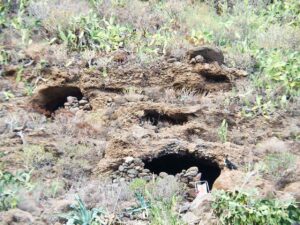
Both the Azores and Canaries have developed a unique form of viticulture in a very inhospitable region. It’s hard to imagine that someone can grow anything but the most rugged crop in the rocky, volcanic soil. Grape vines were the last thing I expected to crisscross the region. However, ingenious vintners have done just that — they created an environment where grapes not only grow, but thrive.
This form of deep-root horticulture called “arenado” is unique to Lanzarote. Small semi-circular walls called “zoco” are made from black lava stones that protect a single vine, providing a barrier against strong trade winds. It’s a labor-intensive form of cultivation as each crater holds one vine, making hand-picked grapes the only option for harvesting. I did not anticipate a wine-tasting on our mid-Atlantic stop, but it was delicious and historically fascinating.
Lava Tubes & Subterranean Tunnels
Lava tubes and deep volcanic caverns riddle the Canary Islands. Several islands, such as Gran Canaria and Tenerife, have extensive pyroclastic fields and some display dramatic volcanic cones with impressive craters, such as Teide on Tenerife and Cumbre Vieja on La Palma.
Given the range of erosional stages of the volcanic islands, each one offers a unique perspective. This means we could hike to the top of a volcanic rim that is covered in deep foliage (Gran Canaria), walk through volcanic moonscapes (Los Lobos), wander deep inside massive caverns (Lanzarote) and follow lava tubes deep inside (Tenerife).
The different stages of each island display both the devastation and the beauty that volcanoes bring. As one explodes, another holds a breathtaking amphitheater and a species of blind crab that is indigenous to the island. While locals continue to deal with the aftermath of Cumbre Vieja’s violent explosion on La Palma, Cueva de los Verdes, Lanzarote holds concerts for an audience of 500 in its expansive cavern and provides sanctuary to a species of blind albino cave crabs in its deep-turquoise underground freshwater lagoon.
Underwater Sculpture Garden
Equally unique to the Canaries is Europe’s first underwater sculpture garden, a collection of 12 installations laid down by sculptor Jason deCaires Taylor to raise social and environmental awareness. “Museo Atlántico” was made public in 2017 and holds 300 life-sized human figures performing everyday tasks: a couple holding hands, a man sitting on a swing, fishermen in their boats, someone taking a selfie. Four years on and the sculptures are starting to create a decent false reef. The effect is impressive … and rather eerie. My dive at the site remains an unforgettable experience that should not be missed on a trip through Lanzarote.
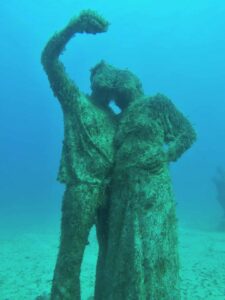
Many sailors use the largest of the Canary Islands, Las Palmas in Gran Canaria, solely for provisioning and boat preparation before a trans-Atlantic passage. However, if you bypass the islands that surround the main island you’d miss out on interesting and diverse islands that should be a highlight destination in the Eastern Atlantic. The ones we visited on our sail through the island group were a continuous series of unfolding surprises.
The villages hold their own quaint small-town European character, and each island offers an experience drastically different than its neighbor. From the bustle of Gran Canaries largest city, Las Palmas, to the silent cave dwellers of its outer communities; from the enormous sand dunes of Fuertaventura’s Parque
Natural de las Dunas to the barren volcanic cone of Los Lobos to the lush laurel forest of Los Tilos de Moya in Gran Canaria; from sea to inland lake to crater rim to underground tunnels; from camel back to mountaintop to mid-city cafes. The Canaries’ special diversity makes a hop-through in route from America to Europe a must-see adventure.


